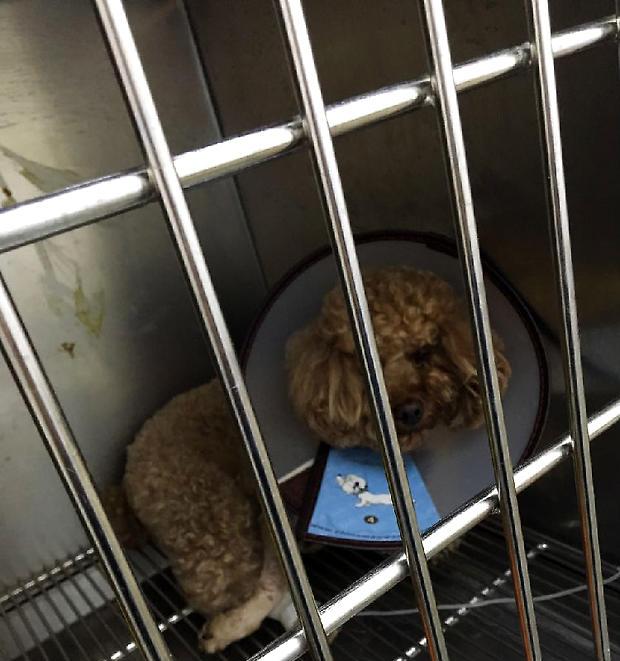The main cause of canine femoral head necrosis is bone ischemia caused by the obstruction of blood flow and damage to the femoral head, so it can also become avascular necrosis of the femoral head or aseptic necrosis of the femoral head.
Figure 1 The sick dog likes to lie down and does not like to move
I. Diseases of animals
The sick dog was a standard poodle. Before the onset of the disease, the feeding condition was good, the appetite and spirit were normal, and the feed was mainly dog food.

Figure 2 The spirit of the sick dog is acceptable
II. Examination and diagnosis
1. Clinical examination
The dog's body temperature was 38.5 degrees Celsius, the heart rate was 75 beats/min, the breathing was 30 times/min, the nose was moist, and the mental state was normal.
2. Laboratory inspection
X-ray films showed that the surface of the femoral head of the left hind limb was not smooth, the density of the posterior metaphysis was inconsistent, the structure of the growth plate disappeared, and the femoral heads on both sides were asymmetrical.
Figure 3 Wearing an Elizabeth ring to prevent licking and biting
III. Surgical treatment
Surgery was decided after consultation with the pet owner.
Figure 4 The sick dog recovered well 7 days after operation
IV. Summary
1. The etiology and pathogenesis of femoral head necrosis
1) The blood supply problem, the blood supply of the femoral head mainly includes the ligamentous artery of the femoral head, the capsular artery and the nourishing artery in the medullary cavity of the femoral neck.
2) Traumatic femoral head necrosis.
3) Non-traumatic avascular necrosis of the femoral head.
2. With the deepening of understanding of the disease, it is found that the disease may be related to trauma, transient synovitis, abnormal growth and development, endocrine disorders, autoimmune deficiency, heredity, environment and other factors.
Figure 5 Painkillers used in conservative treatment
3. If the symptoms of the dog are not very serious or the dog cannot undergo surgical treatment due to its own physical reasons, conservative therapy can be taken, that is, taking painkillers to relieve the dog's pain, and appropriate swimming training.
